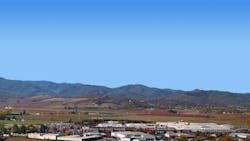Medford, Ore. wins $97M in WIFIA loans
The U.S. Environmental Protection Agency (EPA) has announced two Water Infrastructure Finance and Innovation Act (WIFIA) loans totaling $97 million to the Medford Water Commission of Medford, Ore.
The WIFIA loans will help finance Medford’s Rogue Valley Water Supply Resiliency Program. Which aims to provide safer and more resilient drinking water and meet growing demand for the Rogue Valley.
“Water is an essential and irreplaceable part of our daily lives, but for far too long our water infrastructure has been taken for granted. That is changing in Medford, thanks in part to $97 million through EPA’s WIFIA loan program,” said EPA Assistant Administrator for Water Radhika Fox. “This investment in Medford’s critical water infrastructure will strengthen water system resiliency, improve water quality, and increase capacity to support growth.”
The Rogue Valley Water Supply Resiliency Program coincides with the 100-year anniversary of Medford Water. EPA’s WIFIA loan will help finance this multifaceted program to improve treatment that reduces lead and copper in drinking water; expand treatment and storage capacity at the Robert A. Duff Water Treatment Plant; increase transmission and storage capacity for customers; and modernize processes to improve taste and odor while addressing potential emerging contaminants. The program also includes building a resilient Water Campus to house administration and operational functions.
“Investing in our water infrastructure to meet the growing needs of the Rogue Valley is crucial,” said Mayor of the City of Medford Randy Sparacino. “These funds will help Medford Water complete a number of projects that will ensure continued access to high-quality water at affordable rates for our residents.”
“I am proud of the strategic financial planning that our organization has undertaken to secure this competitive funding,” said Chair of the Board of Water Commissioners Bob Strosser. “The terms of this WIFIA program provide us with a unique opportunity to advance resiliency and capacity — adding projects that will allow us to continue to serve future generations of the Rogue Valley.”
